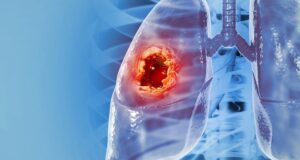Silent spread no more: Discover how advanced surveillance methods are safeguarding vaccinated duck flocks from avian influenza outbreaks.
 Research: Surveillance Strategy in Duck Flocks Vaccinated against Highly Pathogenic Avian Influenza Virus. Image Credit: Pablesku / Shutterstock
Research: Surveillance Strategy in Duck Flocks Vaccinated against Highly Pathogenic Avian Influenza Virus. Image Credit: Pablesku / Shutterstock
In a recent article in the journal Emerging Infectious Diseases, researchers utilized mathematical models to evaluate the effectiveness of strategies to detect highly pathogenic avian influenza (HPAI) among flocks of vaccinated ducks in France.
Their results indicate that enhanced passive surveillance by testing dead birds weekly was the most effective surveillance method, while monthly testing of live birds emerged as the least effective method.
Background
HPAI viruses have caused significant disease outbreaks globally, particularly since 2016, when HPAI clade 2.3.4.4b emerged. These viruses primarily affect birds, posing a major challenge for the poultry industry through direct losses from high illness and fatality rates and indirect economic impacts from market disruptions and efforts at management and prevention. Notably, in non-vaccinated flocks, HPAI outbreaks result in a 93% probability of virus transmission after initial infection. Additionally, there has been an increase in HPAI transmission to mammals, raising concerns about its zoonotic potential despite limited human cases.
France has been heavily impacted by HPAI, especially during the 2021–2022 epizootic, which saw nearly 1,400 poultry farm outbreaks. The recurrence and scale of these outbreaks revealed the inadequacy of traditional biosecurity measures.
Consequently, the European Union (EU) authorized poultry vaccination in 2023. In October 2023, France began a nationwide duck vaccination campaign, focusing on ducks due to their significant contribution to HPAI transmission and high risk of viral spread.
However, vaccination introduces the risk of silent virus circulation, necessitating strict monitoring protocols. France launched a comprehensive surveillance program following EU regulations, involving active, passive, and enhanced passive surveillance methods to detect HPAI early. Enhanced passive surveillance includes weekly testing of dead ducks, while active surveillance involves monthly testing of live ducks. This approach aims to control the virus and reassure international trade partners of the safety of vaccinated flocks.
About the Study
The researchers used a mechanistic model to evaluate the applicability of different surveillance strategies for detecting HPAI. They simulated the transmission of HPAI within a typical group of 6,400 ducks bred for producing foie gras. Ducks were vaccinated at ages 10 and 28 days, with the study focusing on the breeding stage of production.
Researchers employed a stochastic susceptible, exposed, infectious, recovered, or dead (SEIRD) model, categorizing ducks into compartments. They modeled virus introduction and transmission, testing different effective vaccination coverage levels (70%, 80%, 90%). The model considered various parameters, including transmission rate, mortality, case-fatality risk, and immunity development.
The effectiveness of surveillance strategies was assessed by simulating outbreaks and testing different surveillance protocols. These included passive surveillance (based on mortality thresholds), enhanced passive surveillance (regular testing of dead ducks), and active surveillance (testing live ducks). Each strategy was evaluated for its sensitivity (ability to detect outbreaks) and timeliness (speed of detection).
Ultimately, the researchers conducted thousands of simulations to determine the best surveillance approach, comparing strategies based on the number of undetected outbreaks, outbreak size, and detection speed. For instance, in vaccinated flocks with 90% effective coverage, the reproduction number dropped significantly from 16 in non-vaccinated flocks to 1.7 during the immunity phase. Enhanced passive surveillance emerged as the most effective strategy.
Findings
The study found that vaccinating duck flocks significantly reduced the likelihood of avian influenza outbreaks. Without vaccination, the probability of an outbreak was 93%. With 90% effective vaccination coverage, this probability dropped to 38% during the transition phase (days 28–35) and 8% during the immunity phase (after day 35). If the first infected duck was immune, the outbreak probability was further reduced to 3%.
Nearly all ducks (99%) became infectious in non-vaccinated flocks within 14 days. However, in vaccinated flocks with 90% coverage, only 0.3% of ducks became infectious during the immunity phase. Enhanced passive surveillance, especially sampling five to seven dead ducks weekly, proved most effective, detecting 81%–88% of outbreaks. Passive surveillance based on daily mortality showed lower sensitivity (28%–64%), and active surveillance involving live bird sampling was the least sensitive, with delays of up to 28 days.
Overall, only 7% of outbreaks went undetected in vaccinated flocks, with a median of eight infectious ducks and minimal infection-related deaths. Undetected outbreaks were typically characterized by very low within-flock prevalence and short outbreak duration.
Conclusions
Vaccination against HPAI in poultry significantly reduces outbreaks and virus spread. In France (2023–2024), only two outbreaks occurred in vaccinated duck farms, reflecting a 92%–98% reduction in expected epizootic size.
However, vaccinated flocks show fewer signs of illness, making passive surveillance less effective. Enhanced passive surveillance, involving virologic tests on dead ducks, proved most sensitive and timely. The study found a 10-fold decrease in outbreaks and a 100-fold reduction in infectious ducks during the immunity phase in vaccinated flocks. While no surveillance strategy was fully effective, combining enhanced passive and active strategies could improve detection. Future research should explore alternative methods and consider factors like cost and workload.
Journal reference:
- Surveillance Strategy in Duck Flocks Vaccinated against Highly Pathogenic Avian Influenza Virus. Planchand, S., Vergne, T., Guérin, J., Rautureau, S., Gerbier, G., Lambert, S. Emerging Infectious Diseases (2025). DOI: 10.3201/eid3101.241140, https://wwwnc.cdc.gov/eid/article/31/1/24-1140_article




